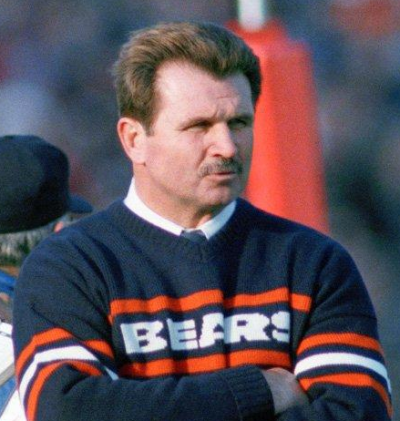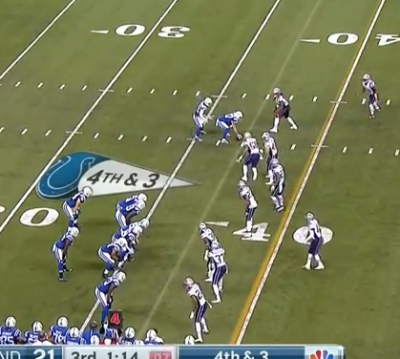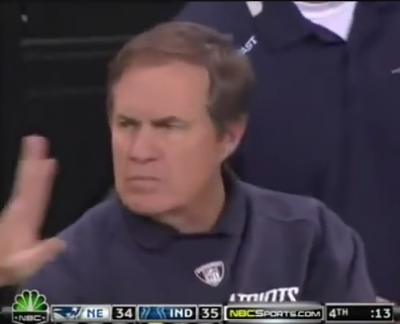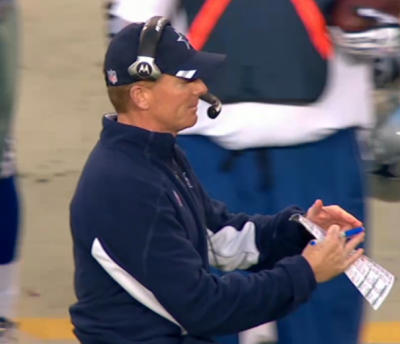The 10 Most Costly NFL Players Per Snap
Saturday, March 05, 2016
Every year, there are some well-paid NFL players who don’t exactly earn their high salaries. Teams give them every chance to succeed, since benching them would signal their contract as a massive misstep by the front office. Sometimes, however, highly-paid players just can’t stay on the field, whether that’s due to injuries, a decline in performance or both.
PointAfter set out to find the 10 players who cost their teams the most money per snap in 2015, dividing a player’s cap hit by the amount of snaps he took part in last season.
To filter out those who were overly unlucky with injuries last season, players had to appear in a minimum of eight games to qualify for this ranking. PointAfter also excluded kickers and punters, who otherwise would have occupied six of the top 10 spots due to their specialized roles.
Though all of these players experienced disappointing seasons for one reason or another, some of them still possess enough talent to bounce back in 2016. For others, though, the end of the road seems to be near. At least they have millions of dollars to fall back on once their NFL careers conclude.
Note: Snap counts obtained from Football Outsiders. All salary data obtained from Spotrac.
[MORE: Ranking 2016 MLB Starting Rotations from Worst to Best]
10. Vincent Jackson, Buccaneers WR
2015 Cost per Snap: $22,822
2015 Cap Hit: $12.2 million
Vincent Jackson has been remarkably reliable over the past eight seasons, reaching the 1,000-yard plateau every time he managed to stay healthy. Unfortunately for Tampa Bay, 2015 wasn’t one of those years, as he missed six games due to knee issues and played about half of the team’s offensive snaps.
Still, even if you extrapolate Jackson’s production to a full 16-game season, he would’ve fallen short with 869 yards. His 6.9 targets per game was his lowest mark since 2010, reflecting Mike Evans’ rise as Tampa Bay’s unquestioned No. 1 receiver.
With Jackson once again poised to eat up $12.2M of the Bucs’ payroll in 2016 during the final year of a five-year, $55M contract, he seemed like a prime candidate to be cut this spring to save the team nearly $10M of cap space. But the Bucs will reportedly keep Jackson at his full salary, seemingly coveting his veteran leadership and relative reliability — especially after watching Adam Humphries average just 9.6 yards per reception in Jackson’s stead.
9. Donald Brown, Chargers RB
2015 Cost per Snap: $23,879
2015 Cap Hit: $4.1 million
Donald Brown, a former first-round pick of the Colts, signed a three-year, $10.5M contract with San Diego before the 2014 season. After Brown averaged a meager 2.6 yards per carry during his first campaign there, some Chargers fans were actively pleading for his release by the time training camp rolled around last year.
It’s certainly not ideal to pay your No. 4 back more than $4M, but that’s exactly what the team did. Brown ended up getting some carries after Branden Oliver (toe) was lost for the season, but he lined up for just 10 percent of San Diego’s snaps.
Aside from a 53-yard scamper that featured some horrific tackling from the Dolphins, Brown averaged just 3.0 yards on 58 carries. It’d be ill-advised for the Chargers to invest millions into that sort of production again, especially since they could cut Brown this instant with no cap-related fallout.
8. Chris Long, Rams DE
2015 Cost per Snap: $24,704
2015 Cap Hit: $12.5 million
The Rams released Long as part of a veteran exodus on Feb. 19. Though the former No. 2 overall pick racked up 54.5 sacks in eight seasons with the franchise, it wasn’t a surprising move considering his recent injury problems and bloated contract.
The veteran struggled to stay on the field over the past two years, missing 16 games, and was set to count $14.3M against the cap next season. Long had just 14 QB hurries and 10 tackles in 2015, so the Rams were probably right to cut ties with the soon-to-be 31-year-old as they transition to a new city and fan base in Los Angeles.
7. DeSean Jackson, Redskins WR
2015 Cost per Snap: $25,412
2015 Cap Hit: $9.3 million
Kirk Cousins’ rise to prominence was made all the more impressive by the fact that his most prolific (and expensive) wideout, DeSean Jackson, only suited up for nine games due to a hamstring injury. Jackson recorded career lows in receptions (30) and yards (528) while playing just 33 percent of Washington’s snaps.
Though the Skins could save nearly $7M on the cap by cutting Jackson, they’ll want to surround Cousins with legit weapons in 2016, assuming he returns to D.C. The 29-year-old Jackson still qualifies, as an inspiring five-game run late in the season (429 yards, four touchdowns) ably demonstrated.
6. Jermon Bushrod, Bears OT
2015 Cost per Snap: $28,246
2015 Cap Hit: $8.1 million
A former Super Bowl champion with New Orleans, Jermon Bushrod has seen better days. The tackle was signed to a five-year, $35M by the Bears in 2013 when he was fresh off consecutive Pro Bowl appearances, but was graded negatively by Pro Football Focus in each of his first two seasons in Chicago.
Bushrod actually acquitted himself well enough in 2015, but suffered a concussion in Week 3 and was relegated to backup duty upon his return. The Bears elected to release Bushrod earlier this month, and his future in the league is unclear.
5. Peyton Manning, Broncos QB
2015 Cost per Snap: $29,511
2015 Cap Hit: $17.5 million
You won’t hear Broncos executive John Elway complaining about the lucrative paychecks Denver’s written to Peyton Manning during his tenure in the Mile High City. The five-year, $96 million bet Elway placed on Manning (and his neck) in 2012 finally paid off in Super Bowl 50, bringing Denver its first Super Bowl since Elway was the grizzled veteran under center.
That being said, Elway certainly wouldn’t prevent Manning from walking away from football this offseason, as Elway did himself after winning Super Bowl XXXIII with the franchise. The Broncos are currently in contract negotiations with Brock Osweiler, who appears to be their quarterback of the future. However, they’d have to pay Manning $19M in 2016 if The Sheriff did elect to return for one last rodeo.
Though Manning is arguably the best quarterback in NFL history and a reigning champion, it’s hard to imagine him performing better than Osweiler after such a trying 2015 campaign.
4. Colin Kaepernick, 49ers QB
2015 Cost per Snap: $30,289
2015 Cap Hit: $15.3 million
Not only was Colin Kaepernick the highest-paid quarterback per snap in 2015 — he was ranked dead last by Pro Football Focus (subscription required) among the 37 QBs who took at least 25 percent of their team’s snaps.
Kaepernick’s fortunes have coincided with the 49ers’ rapid descent from Super Bowl contenders to the cellar of the NFC West. Whoever coaches Kaepernick in 2016 — whether that’s Chip Kelly or someone else — must figure out how to reverse the downfall that’s afflicted him since that promising breakout campaign in 2012, which seems like a decade ago.
The 28-year-old possesses too much talent, and is paid too much, to ride the bench and risk appearing on this list again next year. The six-year, $114 million deal he signed in 2014 realistically won’t be cut short this offseason due to salary cap implications, so Kelly and GM Trent Baalke have a colossal decision to make in the coming months.
Kaepernick being benched for Blaine Gabbert would have been unthinkable even 18 months ago, but the switch actually proved to be the correct choice for San Francisco in 2015. Now the Niners’ brain trust must determine if it’s the right move for the team going forward.
3. Robert Quinn, Rams DE
2015 Cost per Snap: $45,132
2015 Cap Hit: $16.7 million
When Robert Quinn signed a six-year, $65.6M extension with the Rams before the 2014 season, it made sense for both sides. Fresh off an All-Pro nod and 19-sack output during his age-23 season, Quinn capitalized on his sky-high market value. The team locked up a young, homegrown pass rusher — a valuable commodity in today’s NFL.
Though Quinn justified the deal with a second straight Pro Bowl appearance in 2014, a back injury derailed a promising start to 2015. The North Carolina product had five sacks in his first seven games, but was active for just one more contest over the next month before finally heading to injured reserve in December. Overall, he appeared in 29 percent of St. Louis’ defensive snaps.
This contract still has the potential to pan out for the Rams, especially since the cap hits will be more flexible going forward. But they didn’t get their money’s worth in 2015.
2. Charles Johnson, Panthers DE
2015 Cost per Snap: $50,941
2015 Cap Hit: $20 million
After years of solid production in Carolina’s pass rush, Charles Johnson mustered just one sack and 12 tackles in nine games while soaking up a whopping $20 million on the Panthers’ salary cap.
Instead of absorbing Johnson’s projected cap figure of $15M next season, the Panthers elected to release Johnson on March 3 and save cap space. It's likely a prudent decision, since the Panthers boasted one of the league’s strongest defenses en route to a Super Bowl run last season while Johnson floundered.
1. Dwayne Bowe, Browns WR
2015 Cost per Snap: $61,644
2015 Cap Hit: $4.5 million
A rule was bent to include Bowe, who only played in seven games in 2015, one below the cutoff for this article.
However, that rule was established to prevent injured players from being penalized. Bowe was sidelined due to ineffectiveness rather than injuries in 2015, so he wholly earned the title of most expensive player per snap last season.
The Browns bet Bowe could replicate the production he once achieved with the Chiefs, but the 31-year-old couldn’t distinguish himself amid an uninspiring Browns receiving corps. He logged five receptions for 53 yards on the season, playing in just 7 percent of their snaps.
In true Cleveland fashion, the Browns are on the hook for $8M in 2016 for Bowe, whose productive days in the NFL seem to be gone for good. If they decide the cost of cutting Bowe ($4.6M in dead money) would be too much to swallow, there’s a good chance he’ll be among the highest-paid players per snap once again next season.
Explore NFL Player Profiles on PointAfter
An earlier version of this article originally appeared on Sports Illustrated.
Related Slideshow: The 10 Dumbest Coaching Decisions in NFL History
Related Articles
- Seahawks Get Beat in Overtime - See How the Rest of the NFL Performed
- Spotted in Portland: Former NFL Quarterback Tim Tebow
- Super Bowl 50: Denver And Carolina Battle To Be Called NFL’s Best
- Review: Nicola Lopéz’s Show Speaks to Contemporary Conflicts
- REAL TIME: NFL Thanksgivng Game Spreads, Lines and Over/Unders
- Political Conflict and Financial Troubles Sink Q Center
- Portland’s 50 Wealthiest and Most Influential
- Tales of NFL Draft Picks Past: Why Predictions Mean Nothing
- The 10 Dumbest Coaching Decisions in NFL History
- Will Jimmy Graham be the Premier Tight end in the NFL that He is Expected to Be?
- Will Tyler Lockett be the Next Big Time Dominate Receiver in the NFL?
- The Seahawks Don’t Need an NFL Wild Card
- The New NFL Siberia: Playing Guard for the Seattle Seahawks
- The Future of NFL Head Safety is in Seattle
- The Life and Death of an NFL Rivalry
- Parity in the NFL May be Dying But Is Alive and Well in Mixed Martial Arts
- Oregon’s Conflicts Must Stop, Ms. Rosenblum Please Set a Higher Standard
- Give Yourself Some NFL Knowledge For Superbowl Parties
- How the NFL Can Learn From the Portland Trail Blazers
- Former Oregon Coach Chip Kelly Named 3rd Most Influential in NFL
- Coming Wednesday - 50 Wealthiest and Most Influential in Portland
- Chip Kelly’s Influence Continues To Fuel Oregon
- College Counseling: Great Schools for Majors in Peace and Conflict Studies
- How U.S. Presidents Have Influenced Baby Names
- Leather Storrs: How TV Influences our Changing Food Culture
- NFL Commissioner Goodell Made $34.1 Million in 2014
- NFL Concussion Settlement Emphasizes Need for Better Brain Injury Prevention and Analysis
- NEW: Mariota Leaving Oregon For the NFL
- Methodology: 50 Wealthiest and Most Influential in Portland
- Marcus Mariota And The NFL Draft: Where Should He Land?
- Marcus Mariota Has Top Selling NFL Jersey
- Broncos, Panthers Were Among 2015 NFL Playoff Teams Aided by Injury Luck

























 Delivered Free Every
Delivered Free Every
Follow us on Pinterest Google + Facebook Twitter See It Read It